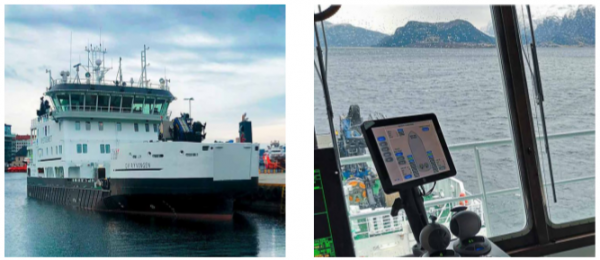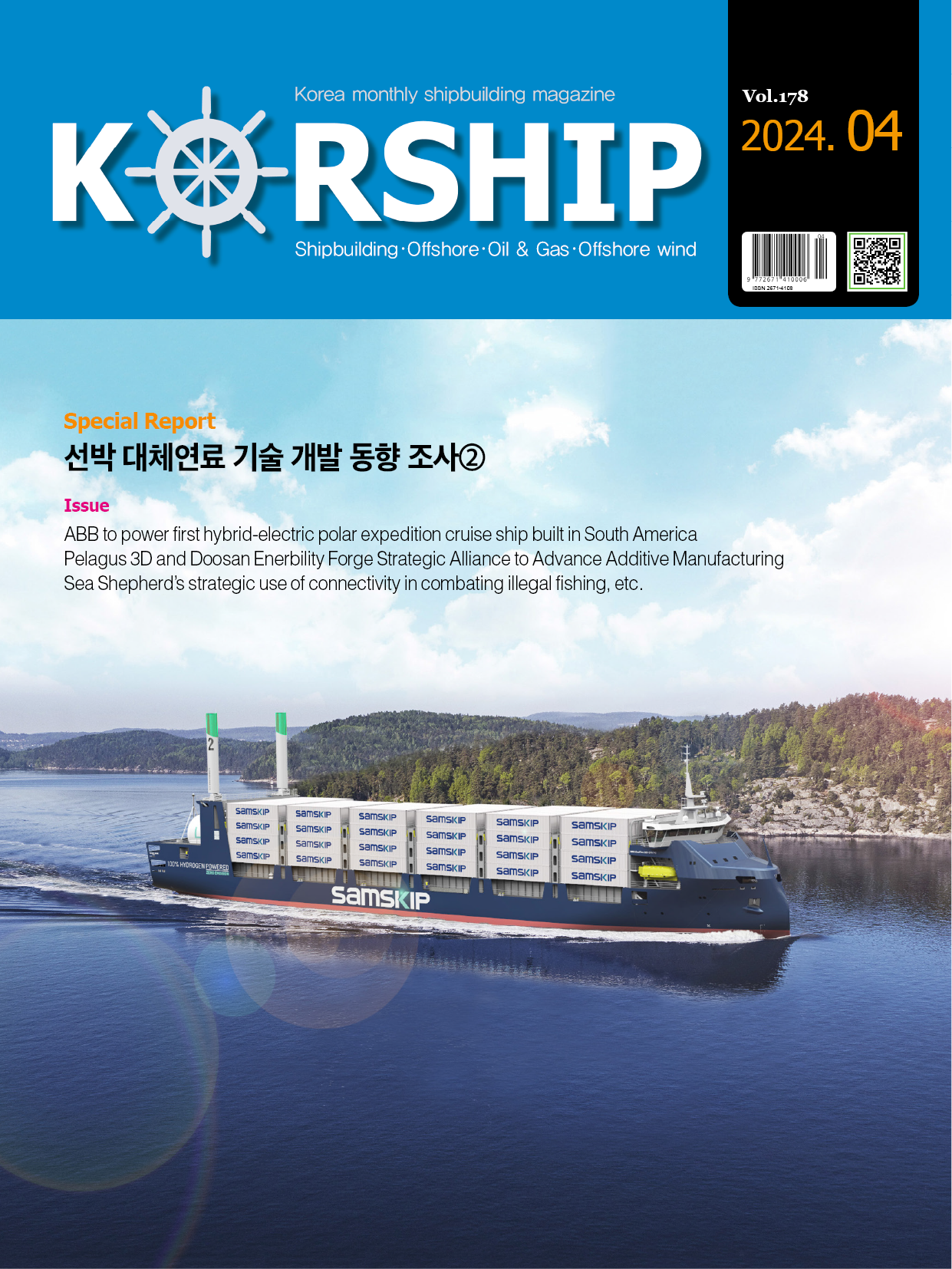Special Report MIDAS – The future of modularization
페이지 정보
작성자 최고관리자 댓글 0건 조회 2,724회 작성일 19-12-23 12:06본문
Standardized modules could replace traditional ship components, changing maritime business models and traditional class processes.
It was a rainy day in January, when OV RYVINGEN hit the water at the Fitjar Mekaniske Verksted AS shipyard on the island of Stord, Norway. At 47 m in length and 1,133 GT, it looks like many of the other vessels operated by the Norwegian Coastal Administration. But OV RYVINGEN is special: this battery-powered oil recovery and repair vessel contains some of the most sophisticated sensor equipment to date. And in years to come, the configuration of its communication, navigation and propulsion systems could prove to be the new industry standard for intelligent ship systems. OV RYVINGEN is one of two vessels operating in constant test mode for the MIDAS project. Kicked off in November 2018, MIDAS has brought together RollsRoyce Marine – now part of Kongsberg Maritime, Norwegian telecommunications company Telenor Maritime, US-based company Marine Technologies LLC and DNV GL to explore a new approach to manufacturing and verification through remote monitoring and grouping components and machinery into several integrated ship systems. “MIDAS is short for ‘modularity in design for asset servitization’. This means we will examine a scenario in which ship systems are offered in the form of standardized modules, rather than individual components – increasing safety, reliability and reducing costs,” explains Knut Erik Knutsen, Senior Researcher, Digital Class and Services at DNV GL Group Technology & Research.
Modularization – how it works
Like putting together kitchens and cupboards from a set of predefined options, shipowners could go to the webpage of an Original Equipment Manufacturer(OEM) and look through a list of options for propulsion system modules suitable for their new vessel. They could do the same for the vessel’s navigation and communications systems. The modules would offer higher uptime and would be delivered with their system design, condition monitoring system and through life maintenance plans pre-approved by DNV GL. They would also come with a digital twin, allowing all stakeholders to test different system configurations, the impact of system updates and run mock-ups of various operational profiles on an open simulation platform.
Changing business models
Turning ship systems into modules could fundamentally change the way ships are built and operated – paving the way for greater standardization in marine manufacturing and changing the role and relationship of various stakeholders. A shipowner would no longer need to take care of maintenance, spare parts, class surveys and logistics. Maintenance and analytics would be performed by the OEM and assured by class, freeing up the owner’s time for vessel operations. “This approach also ensures that software systems are always up to date and robust in the face of challenges,” explains Sverre Torben, Key Technology Owner – Digital at Kongsberg Maritime. “This is a core part of our ship intelligence journey. We want to move towards greater standardization of ship systems and intelligent health monitoring on board. Embedding propulsion systems in a standardized module gives us a much better idea of their performance and reliability, and it helps us anticipate any challenges. This kind of approach would also have a significant impact on the way systems could be inspected by class,” he adds. “MIDAS paves the way for moving from periodical surveys to condition-based health checks. DNV GL’s role in this project is to examine new rules and certification schemes that could accompany greater standardization in shipping. An additional benefit of this business model is that it incentivizes improved availability of systems. This not only enables OEMs to offer a new range of services, but also increases the reliability of maritime systems and assets,”
explains Knut Erik Knutsen.

The modules explained
Each of the other partners is responsible for one module. While Telenor Maritime will take the lead in the communications module, Marine Technologies LLC carries out the navigation module and Kongsberg is responsible for the propulsion module. OV RYVINGEN contains both the propulsion and communications modules. The navigation module has been installed on the offshore supply vessel SEAWAY MOXIE, owned by the UK-based shipowner Subsea 7. Launched in 2013, the 4,367 GT vessel operates in the North Sea. “We’re looking into how we can better integrate navigation components and sensors into a holistic network environment. Installing the equipment as an integrated module enabled us to share hardware and for example reduce the number of monitors on board,” says Sveinung Tollefsen, R&D Manager at Marine Technologies LLC. “We also share data with the project partners, for example information from wind and motion sensors as well as radar imaging. We believe that making our data available to class in particular could improve verification schemes and give owners even greater confidence in the quality of navigation equipment,” he adds. But greater connectivity and information sharing would not be possible without a reliable network. The communications module is at the heart of the MIDAS project. “Reliable, high-speed connectivity is the basis for remote monitoring, inspections and the integration of different ship system modules,” says Bernt Fanghol, Sales Director at Telenor Maritime. “We bundle different communication services into one extensive, highly reliable broadband offering. In the communications module, we focus on providing connectivity supporting services stretching from low speed IoT to high speed video in all areas of the ship, even in challenging spaces such as the propeller shaft room. Our goal is to be part of defining the industry standard for remote operations,” he explains.


Next steps
Currently, all modules are in the testing phase. “As the classification partner, we’re supporting all stakeholders in testing the functionality of virtual ship systems and using a shared data platform,” says Knut Erik Knutsen. “This project has great potential to transform traditional maritime processes into an environment where shared insights, continuous monitoring and specific health indicators will help us all get a much better understanding of how to keep ships operating at their best and how to keep them safe.”
Trond Røren, CEO of the Norwegian Coastal Administration, is already seeing the benefits for OV RYVINGEN. “Through the MIDAS project we've been given access to data that enables us to perform equipment monitoring and find opportunities for energy saving we haven’t had before. The vessel has only been in operation a short while, and we're looking forward to seeing how we can utilize the data for further improvements in our operation.” MIDAS is set to run until the end of 2020. After completing the data collection phase, the partners will work in operational centres, performing simulation trials and testing and collaborating closely on examining what the MIDAS approach could mean for future classification schemes.
■ Source: www.dnvgl.com












